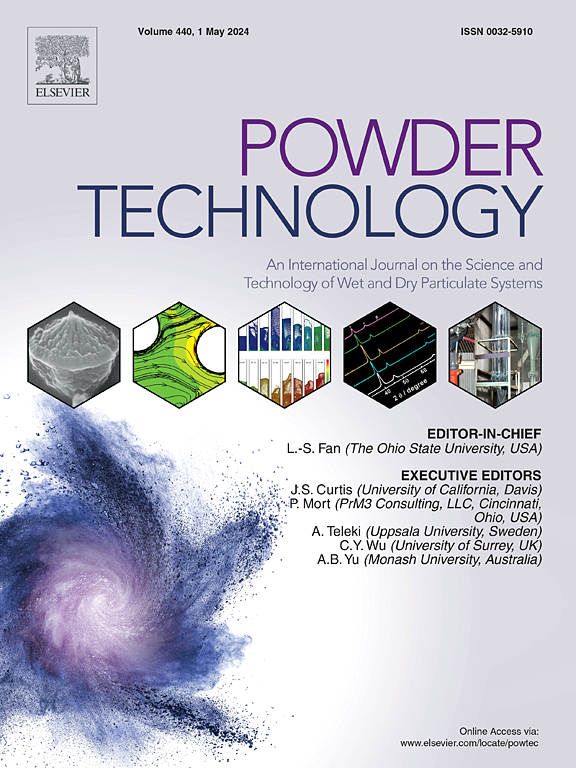Experimental investigation of the effect of interstitial liquid on the shear characteristics of geotechnical granular materials
IF 4.5
2区 工程技术
Q2 ENGINEERING, CHEMICAL
引用次数: 0
Abstract
Interstitial liquid between particles is a significant factor affecting the shear characteristics of geotechnical granular materials. To further investigate this issue, this study systematically conducted ring shear tests on quartz sand with different saturations and particle sizes. It was found that the impact of saturation on the shear characteristics of quartz sand has a strong correlation with particle size. The effective friction coefficient of coarse sand shows a trend of increasing and then decreasing with increasing saturation. The volume strain changes of quartz sand during shearing can be divided into three stages, with the trend in each stage significantly affected by saturation and particle size. The absolute crushing rate of coarse sand gradually decreases with increasing saturation. The smaller the particle size, the lower the likelihood of breakage. The findings provide scientific basis for further understanding the dynamic mechanisms behind the shear deformation and failure-induced disasters of geotechnical granular materials.

间隙液体对岩土颗粒材料剪切特性影响的实验研究
颗粒之间的间隙液体是影响岩土颗粒材料剪切特性的一个重要因素。为了进一步研究这一问题,本研究系统地对不同饱和度和粒径的石英砂进行了环剪试验。结果发现,饱和度对石英砂剪切特性的影响与粒径有很大的相关性。粗砂的有效摩擦系数随着饱和度的增加呈先增大后减小的趋势。石英砂在剪切过程中的体积应变变化可分为三个阶段,各阶段的变化趋势受饱和度和粒度的影响较大。粗砂的绝对破碎率随饱和度的增加而逐渐降低。粒度越小,破碎的可能性越小。研究结果为进一步了解岩土颗粒材料剪切变形和破坏诱发灾害背后的动力机制提供了科学依据。
本文章由计算机程序翻译,如有差异,请以英文原文为准。
求助全文
约1分钟内获得全文
求助全文
来源期刊

Powder Technology
工程技术-工程:化工
CiteScore
9.90
自引率
15.40%
发文量
1047
审稿时长
46 days
期刊介绍:
Powder Technology is an International Journal on the Science and Technology of Wet and Dry Particulate Systems. Powder Technology publishes papers on all aspects of the formation of particles and their characterisation and on the study of systems containing particulate solids. No limitation is imposed on the size of the particles, which may range from nanometre scale, as in pigments or aerosols, to that of mined or quarried materials. The following list of topics is not intended to be comprehensive, but rather to indicate typical subjects which fall within the scope of the journal's interests:
Formation and synthesis of particles by precipitation and other methods.
Modification of particles by agglomeration, coating, comminution and attrition.
Characterisation of the size, shape, surface area, pore structure and strength of particles and agglomerates (including the origins and effects of inter particle forces).
Packing, failure, flow and permeability of assemblies of particles.
Particle-particle interactions and suspension rheology.
Handling and processing operations such as slurry flow, fluidization, pneumatic conveying.
Interactions between particles and their environment, including delivery of particulate products to the body.
Applications of particle technology in production of pharmaceuticals, chemicals, foods, pigments, structural, and functional materials and in environmental and energy related matters.
For materials-oriented contributions we are looking for articles revealing the effect of particle/powder characteristics (size, morphology and composition, in that order) on material performance or functionality and, ideally, comparison to any industrial standard.
 求助内容:
求助内容: 应助结果提醒方式:
应助结果提醒方式:


